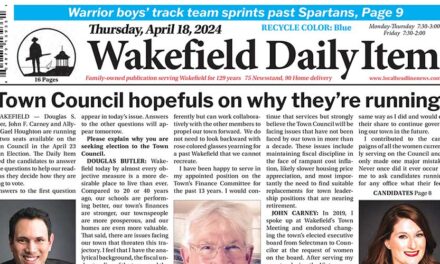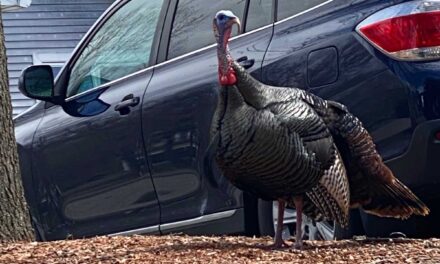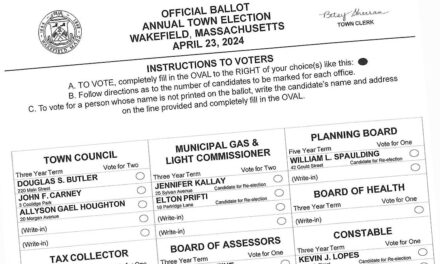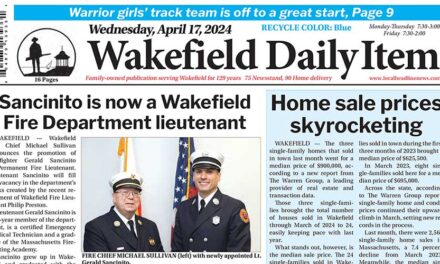By MARK SARDELLA
WAKEFIELD — The management company for Heron Pond Condominium Trust has retained an environmental consulting firm from Woburn to conduct soil testing on the lawns at the 410 Salem St. condo complex. The tests will determine what levels of common fertilizer chemicals are present in the soils.
The tests are in response to concerns from the Conservation Commission that the lawn fertilizing program at the complex has been contributing to the deterioration of Heron Pond as evidenced by a marked increase in algae blooms and lily pad growth in recent years. Of common components of lawn fertilizers, phosphorus and nitrogen in particular are known contributors to algae growth.
Testing by a different firm last year revealed high levels of phosphorus in the soils. At the ConCom’s insistence, the condo complex agreed to suspend fertilizing last spring and summer, and the ConCom believes the pond showed significant improvement as a result. The Commission cited the original Order of Conditions for the development in asking for the testing.
Attending last night’s Conservation Commission meeting were Candice Morse of the management company, Thayer and Associates, along with Thomas Fiore, an attorney representing Heron Pond Condominium Trust. Fiore introduced Ryan Bianchetto of Allen & Major Associates, the environmental consulting firm that will conduct the soil testing.
Bianchetto discussed the draft soil testing plan with the commission and said that once the data is gathered he would come back with a draft turf management plan for the commission’s review. He said that the soil tests would evaluate pH and acidity and measure levels of a variety of nutrients including potassium, phosphorus, magnesium, iron, copper and others. Recommendations for pH and nutrient adjustment will be included in the results, Bianchetto said.
He said that the samples would be taken from six test pits within the 100-foot wetland buffer zone. Given the current snow cover, Bianchetto said that the earliest the tests could be done would be sometime in March. Morse assured the commission that no fertilization program would be undertaken until the ConCom has had an opportunity to review both the test results and the recommendations in the turf management plan.
In response to a question from the commission, Morse said that the soil testing would be done on an annual basis going forward.
ConCom chairman Frank J. Luciani Jr. asked if the groundwater could also be tested. But Bianchetto said that he didn’t think it would provide information different from the soil testing.
Luciani also wanted to make it clear that the “baseline” established by next month’s tests should be for information purposes only and not used as a baseline for limits of chemical levels since the soil has already had years of treatment.
Luciani also wanted the property’s proximity to a wetland factored into the testing and the recommendations. Bianchetto said that he would be trying to balance both the health of the pond and the health of the grass.
Commissioner Frank Calandra suggested that it would make sense to also test the water in the pond itself to get baseline levels there as well.
But Bianchetto worried that the Commission would automatically assume that the Heron Pond fertilization program was responsible for the chemical levels in the pond. Fiore suggested that whatever was found in the water could be coming from anywhere in the watershed.
Conservation Agent Elaine Vreeland was concerned that if the condo complex limits fertilizer within the 100-foot buffer but continues to use high levels outside the buffer, it could still find its way into the pond.
The commission decided that it would take its own water samples from Heron Pond for testing. Luciani also wanted Heron Pond to test soils on the side of the pond opposite the condos to get a baseline of what the condo soils might have looked like prior to years of treatment and to see if there might be another source of nutrients going into the pond.
Vreeland agreed with Fiore’s suggestion that storm water discharged into the pond was a possible source of some of the nutrients in the pond. She proposed that in conjunction with the soil testing the commission also do its own testing near storm water outlets before and after a storm in order to get a more complete idea where the nutrients were coming from.
All parties also agreed to document the pond via monthly photographs as part of the turf management plan.
It was anticipated that the draft turf management plan would be presented at a ConCom meeting in April.




